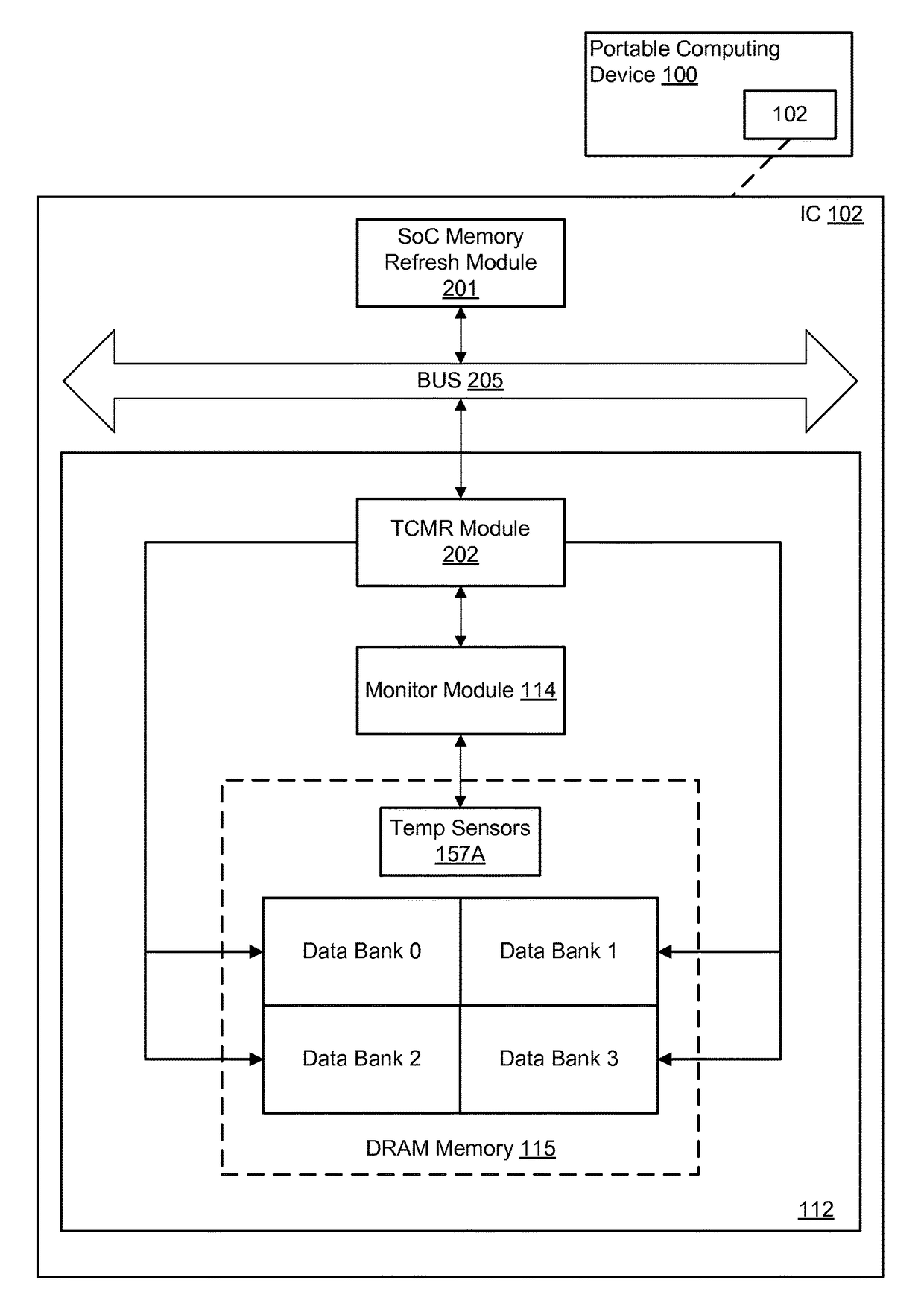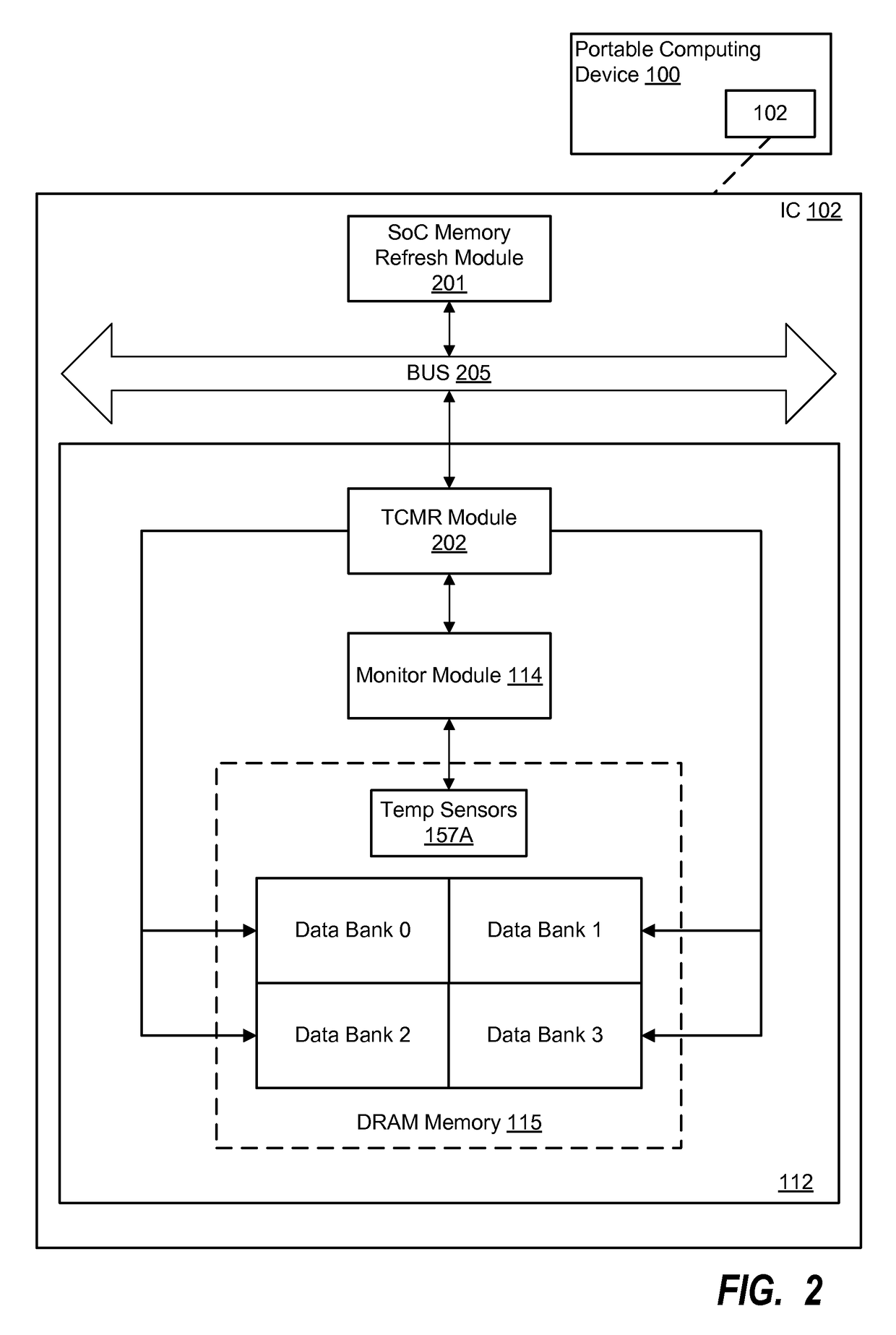System and method for temperature compensated refresh of dynamic random access memory
a dynamic random access memory and refresh technology, applied in climate sustainability, digital storage, instruments, etc., can solve the problems of dram devices, data stored in capacitors, and no way to provide actual temperature feedback to the so
- Summary
- Abstract
- Description
- Claims
- Application Information
AI Technical Summary
Benefits of technology
Problems solved by technology
Method used
Image
Examples
Embodiment Construction
[0019]The word “exemplary” is used herein to mean serving as an example, instance, or illustration. Any aspect described herein as “exemplary” is not necessarily to be construed as exclusive, preferred or advantageous over other aspects.
[0020]In this description, the term “application” may also include files having executable content, such as: object code, scripts, byte code, markup language files, and patches. In addition, an “application” referred to herein, may also include files that are not executable in nature, such as documents that may need to be opened or other data files that need to be accessed.
[0021]In this description, reference to dynamic random access memory “DRAM” memory components will be understood to envision any of a broad class of volatile random access memory (“RAM”) used for long term data storage and will not limit the scope of the solutions disclosed herein to a specific type or generation of RAM. As would be understood by one of ordinary skill in the art, D...
PUM
 Login to View More
Login to View More Abstract
Description
Claims
Application Information
 Login to View More
Login to View More - R&D
- Intellectual Property
- Life Sciences
- Materials
- Tech Scout
- Unparalleled Data Quality
- Higher Quality Content
- 60% Fewer Hallucinations
Browse by: Latest US Patents, China's latest patents, Technical Efficacy Thesaurus, Application Domain, Technology Topic, Popular Technical Reports.
© 2025 PatSnap. All rights reserved.Legal|Privacy policy|Modern Slavery Act Transparency Statement|Sitemap|About US| Contact US: help@patsnap.com



